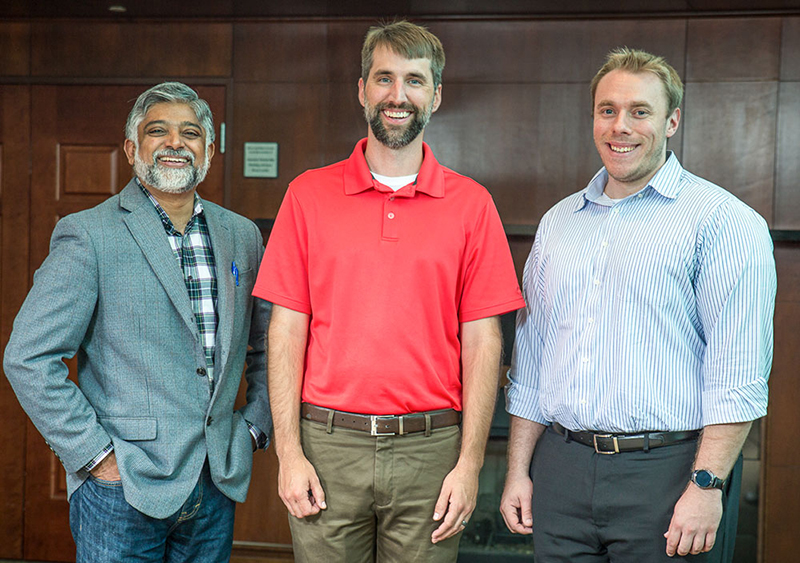Their product still needs a name, but the members of the Cool Aid Team already have a potential target market of more than 1.3 million riders of motorcycles.
The product?
A helmet that doesn’t get hot, even in hot weather, thanks to the technology incorporated into it to condition air before it is breathed in.
“It’s not like air conditioning, but it does provide a cool environment for users while lowering their core body temperature and heart rate — the product is integral to the helmet — allowing cool air in and hot air out,” explains Dr. Nicholas Garafolo, an assistant professor of mechanical engineering at The University of Akron, who led the helmet’s development.
The Cool Aid Team was one of nine selected from a field of 24 teams to present products at the Ohio Collegiate Venture Showcase in late October in Columbus. Hosting the event was the I-Corps@Ohio program, an initiative of the Ohio Department of Higher Education. The goal is to bring promising research projects to market to benefit the public good, create jobs and enhance the state economy.

Members of the Cool Aid Team are, from left, Gopal Nadkarni, Dr. Nicholas Garafolo and Harry Harris. Not pictured is Aaron Rood.
Ohio’s top angel investors, entrepreneurial providers and university leaders attending the showcase heard presentations from teams at Case Western Reserve University, Northeast Ohio Medical University, Wright State University, the University of Cincinnati and Ohio University, in addition to UA.
The technology for the helmet was actually developed two years ago for a different market — the military.
Garafolo and a student team participated in a United States Air Force Research Lab Design Challenge to develop technology that could cool down soldiers in the field, especially those deployed in desert locations.
VIDEO: High school students help Cool Helmet Team
“With the heavy gear they have to wear — soldiers are susceptible to heat stress and heatstroke,” explains Garafolo. “You don’t want to add more weight for them to carry, so we brainstormed. We had our ‘aha moment’ when we thought about how to cool someone from the inside out. The technology developed very organically from there.”
Patent pending on technology
The response from the Air Force was very positive and Garafolo and the original student team now have a patent pending on the technology — the Heat Stress Prevention Kit. But it will take years of testing before the military will put a helmet in production.
While that process continues, I-Corps@Ohio has provided the UA team with hands-on training to develop a business model to commercialize its product.
Joining Garafolo on the Cool Aid team is Harry Harris, an aerospace systems engineering major who serves as entrepreneurial lead; along with Gopal Nadkarni, proof-of-concept director in UA’s Department of Mechanical Engineering, and Aaron Rood, a project manager at Cobham Mission Systems. Nadkarni and Rood serve as mentors, providing contacts, networking opportunities and business advice.
To find a new viable market, Harris worked with students in the College of Engineering’s High School Summer Research Academy over the summer to conduct customer interviews. Their results led them to motorcycle helmet wearers.
Large market for product
There are more than 9 million registered motorcycle riders in the U.S., of which two-thirds reliably wear helmets. They would be willing to pay 10 percent more for a 40-degree reduction in helmet temperature.
UA’s Cool Aid team decided to focus on the motorcycle riders in the top 10 hottest states who are most likely to wear helmets — 1.3 million — as the initial target market.
The experience has been very beneficial, says Harris, who is on a cooperative education assignment this semester at NASA Glenn Research Center in Cleveland.
“I came out with a much better understanding of what happens once a technology finds its way out of the lab, and how we can shape our research into not only developing an innovative technology, but into developing an innovative technology that people really need before sinking too many resources into an unprofitable idea,” says Harris.
Over the next year, Garafolo says the Cool Aid Team will be working to find the funding to become a start up company in production.
And, a name for its product.
